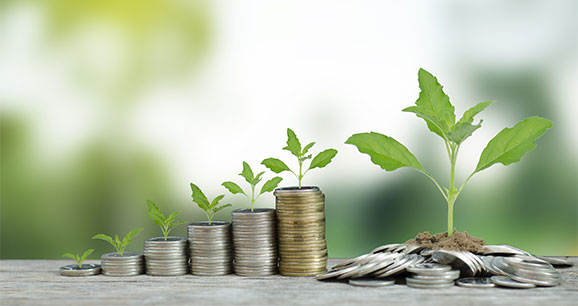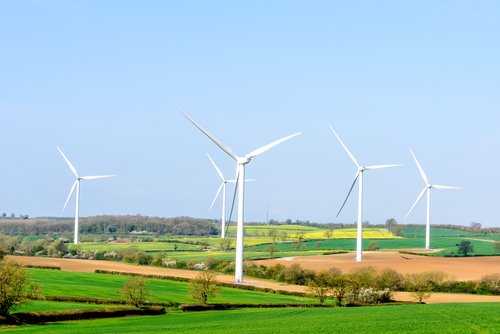
6 ways to make your business more sustainable
Introduction
The environment is a topic on everyone’s mind, and climate change is one of the most defining issues of our time. In 2019, the UK became the first major economy to commit to passing a net zero emissions law, meaning that by 2050, all UK greenhouse gas emissions should be net zero.
But how can you, as a small business, make an impact? To help, our Circular Yorkshire colleagues at the York & North Yorkshire Local Enterprise Partnership (LEP) have put together six key benefits. This article will tell you what these are and provide a place to start on your journey towards being a more environmentally friendly, sustainable business. It will also illustrate how implementing these changes could be hugely beneficial to your business.
- 1. Save energy
There are many ways in which your company could start reducing your energy usage, from the transport methods your staff take to work, to heating and running your premises, to actually making and manufacturing your products.
A good way to figure out where you’re expending the most energy is by getting an energy audit. A lot of utility companies offer these for free to businesses. This way, you can work out where the most energy is being used, and how to cut this down.
You could also consider purchasing energy-efficient office equipment, such as low-energy printers and scanners. They may even buy themselves back soon enough, as saving energy means saving money!
Additionally, it’s a good idea to consider powering your business through renewable energy sources, such as solar or wind.
Not only will saving energy help you be more environmentally friendly, but it could also save your business money in the long-run.
- 2. Rethink packaging
Rethinking packaging can be valuable in a number of ways. Not only could you opt for a more environmentally-friendly option, for example, choosing a biodegradable material or easily recyclable paper over plastic, but reducing packaging altogether can often result in a reduction of business costs.
For ideas and inspiration on more innovative ways to rethink packaging, check out Seagrown. Seagrown are creating a farm to grow and harvest seaweed, which they then use to make bioplastic, among other things. This bioplastic is a reliable, sustainable supply of packaging that they can then sell to other businesses for profit.
- 3. Reduce waste
Reducing waste is one of the simplest steps you can take to begin your sustainability journey. A good start to this step is assessing and understanding what you actually need, through a simple stock and wastage audit.
Are you wasting the same amount of surplus stock or materials each month? If so, can you reduce the quantities of stock you purchase from your supplier?
Also, be aware of any use-by dates to avoid stock needing to be thrown away.
Another thing to consider is whether your waste can actually be repurposed and turned into an alternative product. Are there any companies that could utilise your wasted wood, for example?
Check out Warp It. Warp It are a resource redistribution network who help to reuse and recycle surplus redundant business resources. As suggested in step 1, if you do make the leap to switching to energy-efficient office equipment, companies such as Warp It can help you get rid of old supplies sustainably.
Selling your waste onwards could even increase your revenue, rather than simply cutting costs! For more tips on reducing waste in your supply chain strategy, click here.
- 4. Optimise equipment
This step involves making sure that all of your equipment is working efficiently. Optimising equipment could save energy, and therefore, save you money on bills. Check out how the Cooper King Distillery optimised their distilling equipment to save 13,000 litres of water.
As mentioned in step 1, switching to low-energy equipment can be great for the planet and for your business, but can you also figure out a way to optimise your equipment? Could you even optimise your equipment to make your processes and operations speedier?
Equipment that works efficiently can reduce both the time that the equipment is on and using energy for, and the time your staff are using this equipment for. This can also reduce frustration among employees and free up time to focus on other important business activities.
- 5. Boost your brand
You could incorporate your new-found focus on sustainability in your marketing strategy. More and more people are looking to buy products and services from companies who are actively trying to be kinder to the planet.
There are also many sustainability accreditations that you could seek out, for example, Green Mark. Having an accreditation such as Green Mark listed on your website could boost the confidence of potential customers, knowing that by buying through you, they are investing in a sustainable and environmentally-conscious brand.
- 6. Make your product last longer
As well as the obvious waste implication, making your products more durable could encourage custom. If a product breaks easily, or quickly becomes unusable, customers are unlikely to shop with you again. In contrast, if you provide someone with a product that lasts forever, they are more likely to recommend you to their friends, which would be beneficial to your reputation.
Summary to help you create a more sustainable business
As this article has illustrated, implementing sustainable, environmentally friendly measures in your business can be really valuable. Not only are you being kinder to the planet, but you could also be reducing costs, increasing revenue, utilising time better, and boosting your brand’s reputation!
Find out more about practical steps you can take to being sustainable by downloading our net zero business toolkit.
6 ways to make your business more sustainable
How can you, as a small business, have a more positive impact on the environment?


